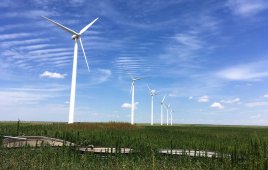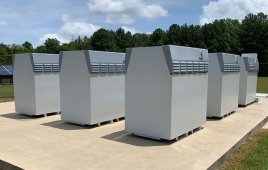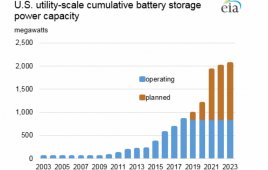Hybrid projects that are a combination of wind energy, solar PV, and other energy sources, are becoming a more and more attractive option to drive the energy transition to higher shares of renewable energy in the mix. Siemens Gamesa is one of the pioneers in this development with a long-term track record in hybridization and off-grid technology.

At their site near Zaragoza, Spain SGRE has commissioned a redox-flow energy storage system. The system is connected to the hybrid controller of the combined wind and PV generation system, and supplements the lithium-ion batteries.
Now the company has taken another step and is testing a battery storage technology with large future potential.
At SGRE’s La Plana R&D site near Zaragoza, Spain, a redox-flow energy storage system has been commissioned. The system is connected to the hybrid controller of the combined wind and PV generation system and supplements the lithium-ion batteries that have been in use here for around two years.
The La Plana test-site integrates the next-generation Vanadium redox energy storage system with a wind turbine, solar-PV modules, and a diesel generator. The new redox flow battery offers a 120-kW energy output with a storage capacity of 400kWh. Siemens Gamesa has been refining its knowledge in hybridization over years.
A sophisticated flexible hybrid controller is the resulting product of this R&D effort. It is the digital core that coordinates the generation of all energy sources to meet the electrical load, in order to reduce the LCoE of the plant regardless of whether the grid is connected or disconnected. To reduce energy costs the controller is targeting to achieve the maximum integration of renewable energy.
“With the Redox-Flow technology commissioned at our La Plana test site, we are now active in all relevant storage technologies including Power-to-Heat and also battery storage systems,” says Antonio de la Torre, SGRE’s chief technology officer. “Due to its scalable energy capacity the Vanadium redox battery is a highly promising option to support our advanced technology offers for isolated and grid-connected systems”.
To support the highly efficient dispatch strategy steered by intelligent control algorithms a large storage capacity helps to keep generators to their technical minimum load and to enhance the share of renewables – even when low wind periods and cloudy sky occur at the same time.
Filed Under: Energy storage, News, Projects




